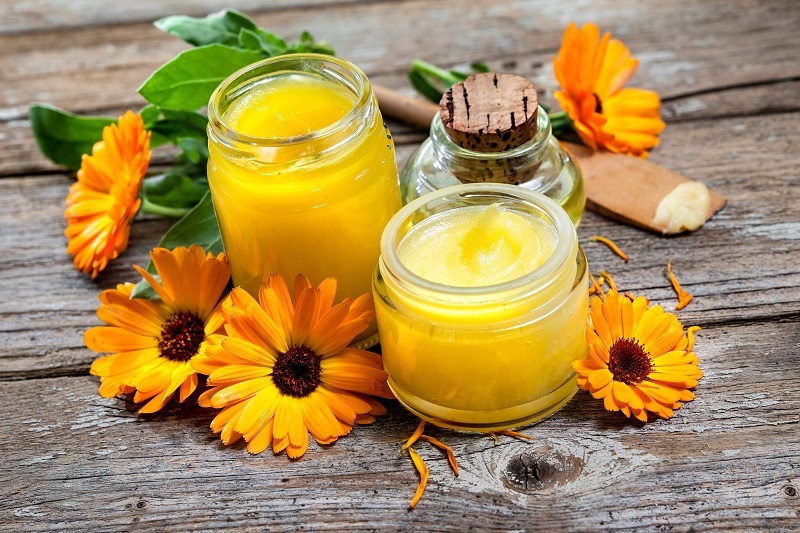7 Fascinating Secrets About Tulips You Never Knew
Posted on 26/08/2025
7 Fascinating Secrets About Tulips You Never Knew
Did you know that tulips, those vibrant heralds of spring, have a history and biology far more intriguing than their simple beauty suggests? Whether you've got a garden full of tulip bulbs or simply enjoy admiring them in a vase, tulips have stories to tell. In this article, we'll explore the 7 fascinating secrets about tulips you never knew, from their royal roots to their surprising role in economic history. Brace yourself for a journey packed with tulip facts that will inspire, amuse, and perhaps even surprise you!

1. Tulips Once Caused the World's First Economic Bubble
You might recognize tulips for their breathtaking colors, but did you know they were at the heart of one of history's first recorded economic bubbles? Tulip Mania gripped the Netherlands in the 1630s, as the value of tulip bulbs soared to astronomical heights. For a brief period, some single bulbs were worth more than a house!
- At its peak, a rare "Semper Augustus" tulip bulb sold for over 10,000 guilders the equivalent of several years' wages for a skilled craftsman.
- Speculators traded contracts on future tulip bulb harvests, leading to wild increases in prices. The market crashed spectacularly in 1637, ruining many investors.
- Tulip Mania is now studied as a classic example of a financial bubble and investor psychology.
This quirky episode solidified the tulip's status as much more than a simple garden plant; they became a symbol of both wealth and human folly.
2. Tulips Aren't Native to the Netherlands
When you picture tulip fields, your mind probably drifts to sprawling Dutch landscapes striped with color. However, the truth is even more surprising: tulips originally come from Central Asia!
- The earliest tulips blossomed wild across the Tien Shan Mountains and Persian steppes, in what is today countries like Kazakhstan, Kyrgyzstan, and parts of China and Iran.
- Nomadic Turks cultivated tulips for centuries before the flower ever reached Europe.
- The word "tulip" comes from the Turkish word "tulbend" or "turban," because of the flower's similarity in shape to traditional headwear.
So next time you spot vibrant Dutch tulips, remember their origins are much farther east than their modern fame suggests!
3. Tulip Colors Have Surprising Meanings
For centuries, flowers have been used to send secret messages, and tulips are no different. Each tulip color carries a unique meaning and symbolism that has evolved throughout history.
- Red tulips: Traditionally associated with true love and romance. In Victorian floriography, a bouquet of red tulips declared irresistible passion.
- Yellow tulips: Once meant hopeless love or jealousy, but now they symbolize cheerfulness and sunshine.
- White tulips: Represent forgiveness, purity, and new beginnings. They're often used in wedding arrangements and apologies.
- Purple tulips: A color linked to royalty and nobility. Gifting purple tulips can signify admiration and high regard.
- Black tulips: Rare and mysterious, these symbolize power, elegance, and a sense of intrigue.
Whichever shade you choose, the language of tulips can say more than words.
4. Tulips Have an Intriguing Role in Art and Culture
Tulips aren't just prized in gardens - they've left a profound mark on art and culture. In the Ottoman Empire, tulips were considered a symbol of paradise on earth, and stylized tulip motifs decorated everything from tilework to textiles.
- During the Ottoman "Tulip Era" (early 1700s), Istanbul celebrated extravagant tulip festivals and admired the flower as a symbol of abundance and indulgence.
- Dutch Golden Age painters often featured tulips in still life paintings, capturing their delicate forms and lush colors.
- Today, the Netherlands hosts the world's largest flower garden, Keukenhof, attracting over a million visitors every spring. The garden boasts more than 7 million tulip blooms in spectacular patterns.
This rich history cements the tulip's reputation as a cultural icon.
5. Tulips Are Edible - and Were Once a Wartime Food
Believe it or not, tulips can be eaten! While they're mostly admired for their beauty, tulip petals are non-toxic and were consumed during times of food scarcity.
- During the "Hunger Winter" of WWII in the Netherlands, thousands of people survived by eating boiled tulip bulbs when there was nothing else to eat. The bulbs were often ground into flour or used as a substitute for onions and potatoes.
- Tulip petals can be used in salads and as garnishes. Some varieties have a mild, sweet flavor while others are bitter.
- However, caution is advised: not all tulip parts or varieties are safe for regular consumption, and bulbs especially should never be eaten unless you're certain they haven't been treated with pesticides or fungicides.
Tulips demonstrate surprising resilience and versatility--even in the harshest times.
6. Tulips Have Mystical Powers in Folklore
Throughout history, tulips have been woven into folklore and stories about transformation, love, and protection.
- In Persian legend, the red tulip symbolizes a declaration of love - according to the tale, a youth named Farhad fell in love with Shirin. When she died, he was devastated and rode his horse off a cliff. Red tulips are said to have sprung from his blood, forever tying the flower to passionate devotion.
- Dutch folklore suggests that tulips bring prosperity and luck. It's said that a home with tulips in the windowsill will enjoy good fortune.
- Some Turkish traditions believed tulips protected against evil spirits, and mothers tucked the petals into their children's clothing for safety.
Tulips are more than decorative--they're woven into the very stories that shape cultures.
7. Breeding Tulip Varieties Is Both Science and Art
When you see the dazzling range of tulip varieties--from frilled "parrot" tulips to nearly-black "Queen of Night"--it's all thanks to generations of careful breeding.
- Each year, Dutch breeders cross-pollinate tulips with specific desired traits, often spending years to perfect a new variety.
- Color "breaking" in tulips, which creates unique flame-like patterns on the petals, was originally the result of a virus called the Tulip Breaking Virus. Though beautiful, virus-infected bulbs were eventually discouraged in modern cultivation to maintain healthier flowers.
- Today, Netherlands is the world's leader in tulip cultivation and export. There are over 3,000 registered varieties, from classic single-cup tulips to doubles, fringed, and even striped petals.
Thanks to centuries of care and creativity, gardeners around the globe can enjoy an astonishing spectrum of tulip beauty each spring.

How to Grow and Care for Tulips: Expert Tips
Now that you know the secrets of these iconic blooms, perhaps you're tempted to plant your own tulip bulbs. Here's how to help your tulip garden thrive:
Planting Tulips for Spectacular Blooms
- Plant tulip bulbs in the autumn, about 6-8 weeks before the first hard frost is expected.
- Choose a site with well-draining soil and full sun for the best flower performance.
- Plant bulbs pointy side up, about 6 inches deep and 4 inches apart.
Tulip Care Tips
- Water deeply after planting but avoid soggy soil.
- Once tulips bloom in spring, allow the foliage to die back naturally--this feeds the bulb for next year's flowers.
- Protect bulbs from hungry critters with chicken wire barriers or by planting daffodils (which are unpalatable) nearby.
With a little care and attention, tulips will reward you with dazzling color and joy, year after year.
Conclusion: Tulips - Much More Than a Pretty Flower
You may have admired fields of tulips or a simple bouquet on the table--but now you know: tulips have shaped economies, inspired art, nourished people in hardship, and captured hearts worldwide with their colors and stories. From their mountainside origins in Asia to their iconic status in the Netherlands and beyond, the mysterious world of tulips offers much more than meets the eye.
Next time you see a tulip, remember these hidden stories--they're blossoms brimming with history, wonder, and hope.
Related Resources
Keep discovering the world of tulips and their fascinating secrets--who knows which blooms will inspire your next gardening adventure!
Latest Posts
Popular Flowers in [NEIGHBOURHOOD]: What [POSTCODE] Locals Love
Flower Delivery in [AREA]: What Locals Need to Know
7 Fascinating Secrets About Tulips You Never Knew
Blossoming Identity: Which Flower Embodies Your Personality
Unveiling the secrets behind peony flower meanings and colors





